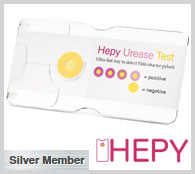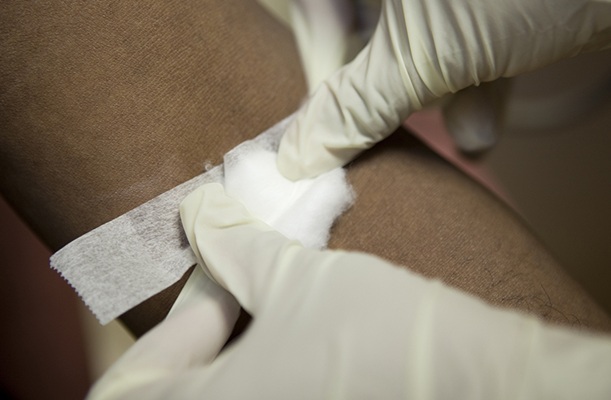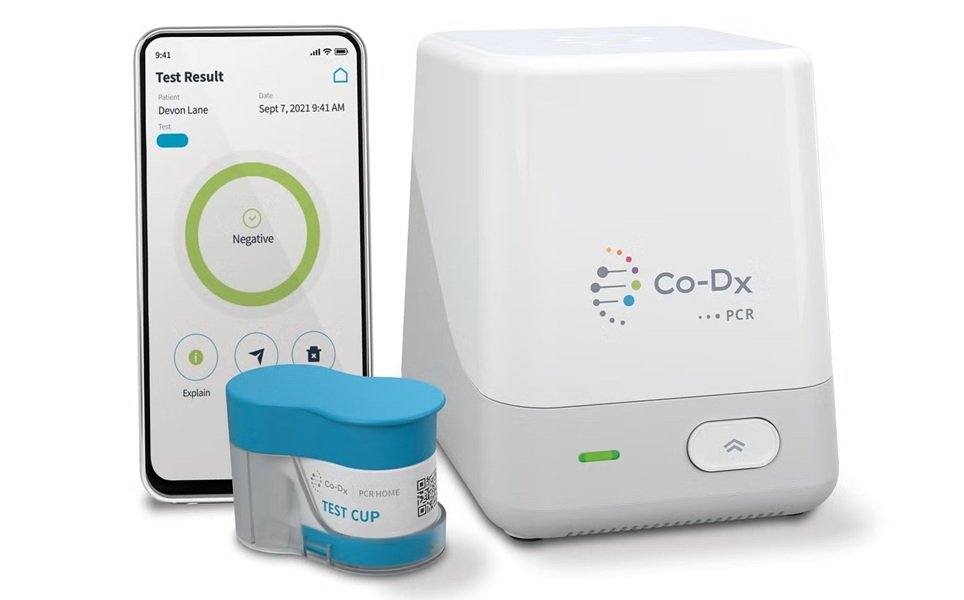Gene Type Associated with Higher Risk of Celiac Disease
|
By LabMedica International staff writers Posted on 10 Jul 2014 |
Researcher have found that children born with 2 copies of a high-risk variant in a specific group of genes confers 26% chance of developing celiac disease autoimmunity (CDA), an early sign of celiac disease (CD), by age 5. They also found a higher celiac risk in Sweden than in the three other studied countries, even with the same genetic risk factors.
The Environmental Determinants of Diabetes in Youth consortium (TEDDY) is studying CD and type-1 diabetes because both are autoimmune diseases with some of the same genetic risk factors. CD (which stems from an immune reaction to gluten) occurs in just under 1% of the USA population, and is more common than type-1 diabetes. The celiac study followed 6,403 newborn children with either of two high-risk gene groups important for immune function—HLA-DR3-DQ2 or HLA-DR4-DQ8—to see who would develop CD or CDA. These genes are involved in presenting gluten to immune cells. Over five years, 291 developed CD, while another 786 developed CDA.
“By looking at the genes of the children who participated in TEDDY, we can now identify who among them is at highest risk for CD, and their parents and health care providers can monitor these children to detect the disease early,” said Beena Akolkar, PhD, project scientist for TEDDY at the National Institute of Diabetes and Digestive and Kidney Diseases (NIDDK; primary funder of TEDDY) of the US National Institutes of Health (NIH; Bethesda, MD, USA).
Researchers found that youth with 2 copies of HLA-DR3-DQ2 had the highest likelihood of disease development by age 5. Of this group, 26% developed CDA by age 5 and 12% developed CD. In those with 1 copy of HLA-DR3-DQ2, the risks of CDA and CD by age 5 were 11% and 3%, respectively. About 90% of CD patients carry HLA-DR3-DQ2.
Based on earlier research, lower rates of CDA and CD were expected in the USA and Germany than in Sweden. Rates of CDA in Sweden were nearly double the USA rates. However, the researchers were surprised to discover that Sweden also had higher rates of CDA and CD than Finland. “We’ve long known that Sweden has a high incidence of CD, but we don’t yet know why. TEDDY’s unique structure of having the same protocol in several countries enables us to search for factors that trigger the disease,” said the paper’s senior author Daniel Agardh, MD, PhD, of Lund University in Sweden, “By studying similarities and differences between genes and environmental factors in these countries, we hope to pinpoint risk factors for the disease.” This study will include examining how diet affects bacteria in the gut and the immune system of children with differing genetic risks.
The primary goal of TEDDY is to find the causes of type-1 diabetes—why some children with high-risk genes for type-1 diabetes go on to develop the disease while others with the same genetic risk do not. “With research networks like TEDDY, NIH is actively seeking to understand how diseases like celiac and type-1 diabetes occur and, by using genetic screening and other tools, to develop a more personalized approach to disease prevention and treatment,” said NIDDK Director Griffin P. Rodgers, MD.
The study was reported by Liu E. et al. in the New England Journal of Medicine, July 3, 2014.
Related Links:
National Institutes of Health
The Environmental Determinants of Diabetes in Youth consortium (TEDDY)
Celiac disease
The Environmental Determinants of Diabetes in Youth consortium (TEDDY) is studying CD and type-1 diabetes because both are autoimmune diseases with some of the same genetic risk factors. CD (which stems from an immune reaction to gluten) occurs in just under 1% of the USA population, and is more common than type-1 diabetes. The celiac study followed 6,403 newborn children with either of two high-risk gene groups important for immune function—HLA-DR3-DQ2 or HLA-DR4-DQ8—to see who would develop CD or CDA. These genes are involved in presenting gluten to immune cells. Over five years, 291 developed CD, while another 786 developed CDA.
“By looking at the genes of the children who participated in TEDDY, we can now identify who among them is at highest risk for CD, and their parents and health care providers can monitor these children to detect the disease early,” said Beena Akolkar, PhD, project scientist for TEDDY at the National Institute of Diabetes and Digestive and Kidney Diseases (NIDDK; primary funder of TEDDY) of the US National Institutes of Health (NIH; Bethesda, MD, USA).
Researchers found that youth with 2 copies of HLA-DR3-DQ2 had the highest likelihood of disease development by age 5. Of this group, 26% developed CDA by age 5 and 12% developed CD. In those with 1 copy of HLA-DR3-DQ2, the risks of CDA and CD by age 5 were 11% and 3%, respectively. About 90% of CD patients carry HLA-DR3-DQ2.
Based on earlier research, lower rates of CDA and CD were expected in the USA and Germany than in Sweden. Rates of CDA in Sweden were nearly double the USA rates. However, the researchers were surprised to discover that Sweden also had higher rates of CDA and CD than Finland. “We’ve long known that Sweden has a high incidence of CD, but we don’t yet know why. TEDDY’s unique structure of having the same protocol in several countries enables us to search for factors that trigger the disease,” said the paper’s senior author Daniel Agardh, MD, PhD, of Lund University in Sweden, “By studying similarities and differences between genes and environmental factors in these countries, we hope to pinpoint risk factors for the disease.” This study will include examining how diet affects bacteria in the gut and the immune system of children with differing genetic risks.
The primary goal of TEDDY is to find the causes of type-1 diabetes—why some children with high-risk genes for type-1 diabetes go on to develop the disease while others with the same genetic risk do not. “With research networks like TEDDY, NIH is actively seeking to understand how diseases like celiac and type-1 diabetes occur and, by using genetic screening and other tools, to develop a more personalized approach to disease prevention and treatment,” said NIDDK Director Griffin P. Rodgers, MD.
The study was reported by Liu E. et al. in the New England Journal of Medicine, July 3, 2014.
Related Links:
National Institutes of Health
The Environmental Determinants of Diabetes in Youth consortium (TEDDY)
Celiac disease
Latest Molecular Diagnostics News
- New Serum Marker-Editing Strategy to Improve Diagnosis of Neurological Diseases
- World’s First Genetic Type 1 Diabetes Risk Test Enables Early Detection
- Blood Test to Help Low-Risk Gastric Cancer Patients Avoid Unnecessary Surgery
- First-Of-Its-Kind Automated System Speeds Myeloma Diagnosis
- Blood Protein Profiles Predict Mortality Risk for Earlier Medical Intervention
- First Of Its Kind Blood Test Detects Gastric Cancer in Asymptomatic Patients
- Portable Molecular Test Detects STIs at POC in 15 Minutes
- Benchtop Analyzer Runs Chemistries, Immunoassays and Hematology in Single Device
- POC Bordetella Test Delivers PCR-Accurate Results in 15 Minutes
- Pinprick Blood Test Could Detect Disease 10 Years Before Symptoms Appear
- Refined C-Reactive Protein Cutoffs Help Assess Sepsis Risk in Preterm Babies
- Blood Test Accurately Detects Brain Amyloid Pathology in Symptomatic Patients
- New Molecular Test Improves Diagnostic Accuracy of Lyme Disease
- New Genetic Test Enables Faster Diagnosis of Rare Diseases
- Urine Test Detects Inherited Neuropathy Missed by Genetic Screening
- Genomic Test Predicts Risk of SCC Metastasis
Channels
Clinical Chemistry
view channel
Chemical Imaging Probe Could Track and Treat Prostate Cancer
Prostate cancer remains a leading cause of illness and death among men, with many patients eventually developing resistance to standard hormone-blocking therapies. These drugs often lose effectiveness... Read more
Mismatch Between Two Common Kidney Function Tests Indicates Serious Health Problems
Creatinine has long been the standard for measuring kidney filtration, while cystatin C — a protein produced by all human cells — has been recommended as a complementary marker because it is influenced... Read moreHematology
view channel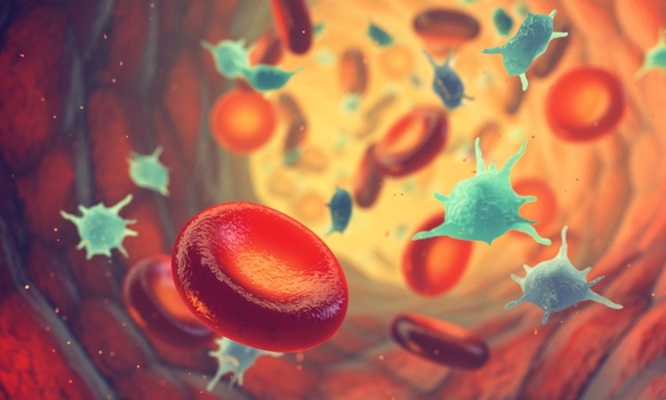
Platelet Activity Blood Test in Middle Age Could Identify Early Alzheimer’s Risk
Early detection of Alzheimer’s disease remains one of the biggest unmet needs in neurology, particularly because the biological changes underlying the disorder begin decades before memory symptoms appear.... Read more
Microvesicles Measurement Could Detect Vascular Injury in Sickle Cell Disease Patients
Assessing disease severity in sickle cell disease (SCD) remains challenging, especially when trying to predict hemolysis, vascular injury, and risk of complications such as vaso-occlusive crises.... Read more
ADLM’s New Coagulation Testing Guidance to Improve Care for Patients on Blood Thinners
Direct oral anticoagulants (DOACs) are one of the most common types of blood thinners. Patients take them to prevent a host of complications that could arise from blood clotting, including stroke, deep... Read moreImmunology
view channel
Gene Signature Test Predicts Response to Key Breast Cancer Treatment
DK4/6 inhibitors paired with hormone therapy have become a cornerstone treatment for advanced HR+/HER2– breast cancer, slowing tumor growth by blocking key proteins that drive cell division.... Read more
Chip Captures Cancer Cells from Blood to Help Select Right Breast Cancer Treatment
Ductal carcinoma in situ (DCIS) accounts for about a quarter of all breast cancer cases and generally carries a good prognosis. This non-invasive form of the disease may or may not become life-threatening.... Read moreMicrobiology
view channelRapid POC Tuberculosis Test Provides Results Within 15 Minutes
Tuberculosis remains one of the world’s deadliest infectious diseases, and reducing new cases depends on identifying individuals with latent infection before it progresses. Current diagnostic tools often... Read more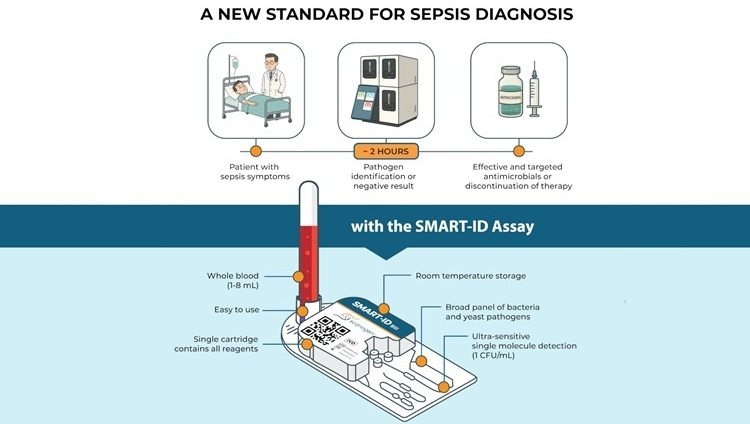
Rapid Assay Identifies Bloodstream Infection Pathogens Directly from Patient Samples
Bloodstream infections in sepsis progress quickly and demand rapid, precise diagnosis. Current blood-culture methods often take one to five days to identify the pathogen, leaving clinicians to treat blindly... Read morePathology
view channelAI Tool Outperforms Doctors in Spotting Blood Cell Abnormalities
Diagnosing blood disorders depends on recognizing subtle abnormalities in cell size, shape, and structure, yet this process is slow, subjective, and requires years of expert training. Even specialists... Read more
AI Tool Rapidly Analyzes Complex Cancer Images for Personalized Treatment
Complex digital biopsy images that typically take an expert pathologist up to 20 minutes to assess can now be analyzed in about one minute using a new artificial intelligence (AI) tool. The technology... Read moreTechnology
view channel
AI Saliva Sensor Enables Early Detection of Head and Neck Cancer
Early detection of head and neck cancer remains difficult because the disease produces few or no symptoms in its earliest stages, and lesions often lie deep within the head or neck, where biopsy or endoscopy... Read more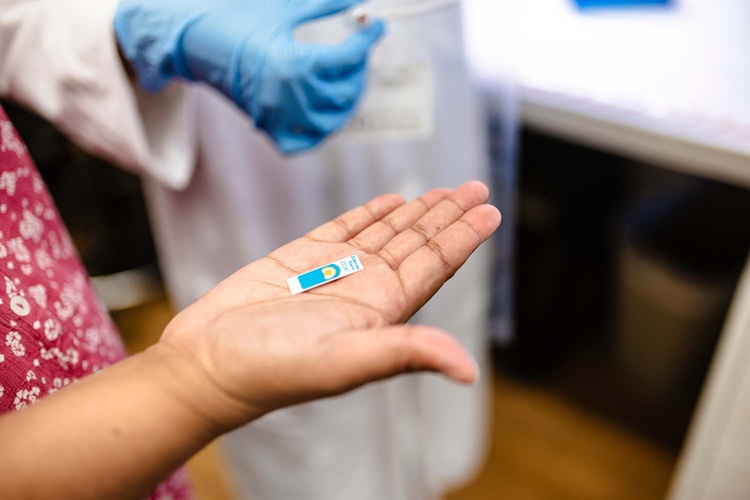
AI-Powered Biosensor Technology to Enable Breath Test for Lung Cancer Detection
Detecting lung cancer early remains one of the biggest challenges in oncology, largely because current tools are invasive, expensive, or unable to identify the disease in its earliest phases.... Read moreIndustry
view channel
Abbott Acquires Cancer-Screening Company Exact Sciences
Abbott (Abbott Park, IL, USA) has entered into a definitive agreement to acquire Exact Sciences (Madison, WI, USA), enabling it to enter and lead in fast-growing cancer diagnostics segments.... Read more






